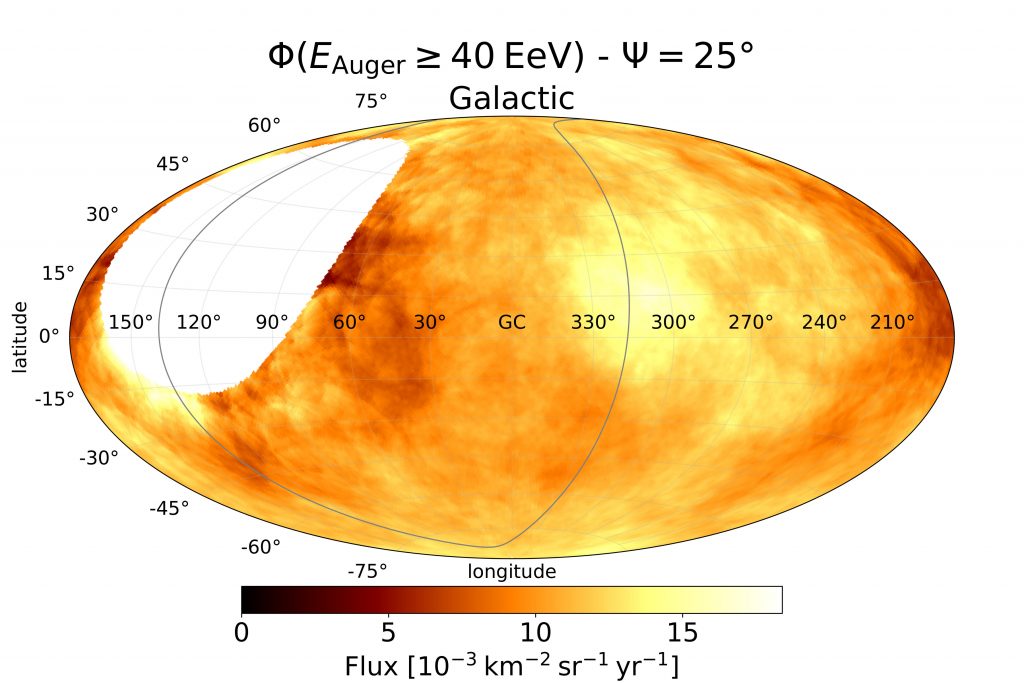
The Astrophysical Journal publishes on 2022-08-24 an article from the Pierre Auger collaboration, led by Jonathan Biteau (IJCLab) and Lorenzo Caccianiga (INFN Milano, Italy). This work compiles the energies and arrival directions of all the events detected by the largest cosmic ray observatory ever built over a period of 17 years, and makes them publicly available with the analysis software. Model-dependent and -independent analyses confirm evidence of an excess in the Centaurus region, which is expected to reach the 5σ significance level by the end of 2025 (± 2 years). Whether active or star-forming galaxies are responsible for this excess remains an open question.
Abstract
A promising energy range to look for angular correlation between cosmic rays of extragalactic origin and their sources is at the highest energies, above few tens of EeV (1 EeV = 10¹⁸ eV). Despite the flux of these particles being extremely low, the area of ~3000 km² covered at the Pierre Auger Observatory, and the 17-year data-taking period of the Phase 1 of its operations, have enabled us to measure the arrival directions of more than 2600 ultra-high energy cosmic rays above 32 EeV. We publish this data set, the largest available at such energies from an integrated exposure of 122,000 km² sr yr, and search it for anisotropies over the 3.4π steradians covered with the Observatory. Evidence for a deviation in excess of isotropy at intermediate angular scale, with ~15° Gaussian spread or ~25° top-hat radius, is obtained at the 4σ significance level for cosmic-ray energies above ~40 EeV.









